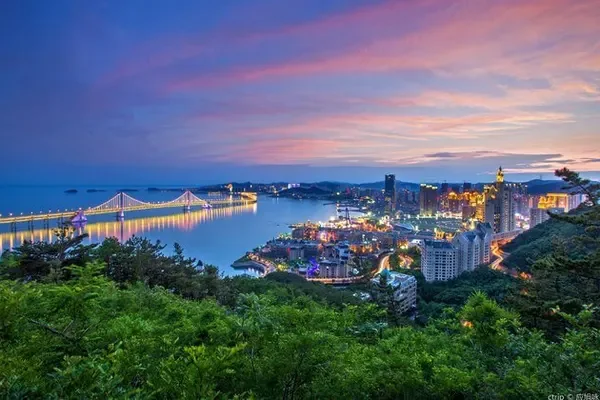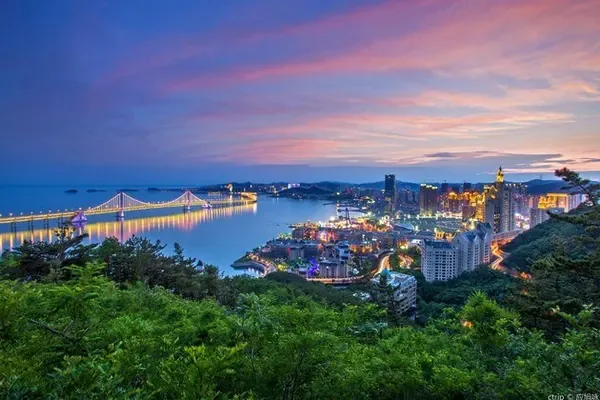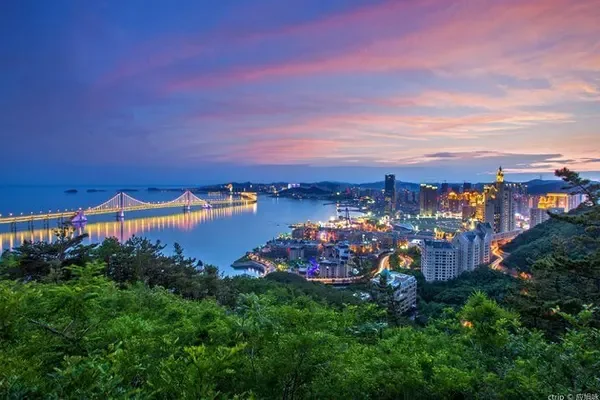The beginning of 2020 was a bit difficult, but after the great difficulties, it showed its true colors as a great country. Every piece of land in China has contributed its own strength to the fight against the epidemic prevention and control. After the epidemic, the land of China will be a thriving scene again.
Every city has experienced five thousand years of Chinese history and is gradually showing its splendor. Guyuan is also such a city. There is the Mount Sumeru Grottoes, a must-pass on the eastern section of the ancient "Silk Road" and the North Road; there is also the Liupanshan Red Army Long March Scenic Spot; now it is a political, economic, cultural and transportation hub. This city is worth savoring carefully.
One of China's Top Ten Grottoes - Sumeru Grottoes
Mount Xumi Grottoes, located 55 kilometers northwest of Guyuan City in Ningxia, on Mount Xumi, hanging north of Liupan Mountain, is the only place to pass through the eastern section of the ancient "Silk Road". The largest grotto group in the autonomous region. The Mount Sumeru Grottoes were first excavated in the Taihe period of Emperor Xiaowen of the Northern Wei Dynasty (477-499), and have undergone large-scale construction in the Western Wei, Northern Zhou, Sui and Tang dynasties and heavy repairs in the Song, Yuan, Ming, and Qing dynasties. With the help of the mysterious Buddhist cultural color , Incense has flourished for more than 1,500 years, and it has become the largest Buddhist temple and Zen temple in Guyuan in ancient times. "Xumi" is a transliteration of Sanskrit, meaning Baoshan.
There are 162 existing grottoes in Xumishan Grottoes, which are distributed in eight areas naturally formed from south to north, namely, the Dafolou area, the Zisun Palace area, the Yuanguang Temple area, the Xiangguo Temple area, the Taohua Cave area, the Songshuwa area, and the three kilns. District and Heishigou District. There are more than 500 well-preserved statues, 53 Chinese and Tibetan inscriptions, 3 inscriptions, 13 residual steles, and more than 20 square meters of murals. Among the more than 500 body statues, murals, and inscriptions preserved, whether it is Buddhist figure statues, painted murals, or Buddhist legends, each retains distinct characteristics of the times, whether it is a 20-meter-high Buddha or a 0.2-meter-high The supporters are all exquisitely carved, with both reliefs and high reliefs similar to round sculptures, full of strong life atmosphere.
Most of the grottoes in the Northern Wei Dynasty are concentrated on the cliff face of the official district of Zisun. Judging from the existing statue caves, the cave chambers are square, and the square tower columns in the chamber are divided into niches on four sides. This form of grottoes evolved from the "Zhiti" grottoes in India. There are mostly one Buddha and two Bodhisattvas: the Buddha statue is larger and sits in the middle; the Bodhisattva is short and stands on both sides. But there are also special cases, such as the earliest fourteenth cave excavated in Mount Sumeru, where the Buddha statues are carved and painted, except for one niche which is Sakyamuni Buddha, the rest of the niches are all a Buddha statue, without side attendants Buddha.
Looking at these statues, the construction method is simple and the faces are plump, which are similar to the early statues in Yungang and Dunhuang Grottoes. The 24th and 32nd Caves were excavated a little later than that, but here are already "standard" one Buddha and two Bodhisattvas. Its modeling features, clear face, slender body, the Buddha wears a double-collared robe, and the Bodhisattva wears a Han-style double-breasted sleeve jacket, which is quite different from the Fourteen Caves.
The grottoes of the Northern Zhou Dynasty occupy a prominent position in the Grottoes of Mount Xumi due to their large number, large scale and exquisite statues. Compared with the grottoes of the Northern Wei Dynasty, the biggest change is that the small niche of the central tower column has disappeared, replaced by a large niche and large statues with low temples, round faces, broad shoulders and bulging abdomen, giving people a heavy and solid look. feel. Caves 45 and 49, which have the most statues in existence, have more than 40 statues larger than real people. In each niche, some are standing Buddhas, and generally there are one Buddha and one Bodhisattva. Decorative carvings, such as curtain-style Buddhist altars; tassels on the mouth of the dragon's mouth; various small Buddhas on the chin of the altar; musicians holding various musical instruments under the altar seat, playing the fife, pipa, or Beat the Jie drum. Surrounding the tower pillars on the top of the cave, there are also carved a pair of dancers flying towards each other, with their shawls fluttering, showing the grand occasion of music art in the Northern Dynasties.
Play Tips:
The location of Mount Sumeru Grottoes is relatively remote, so choose a season with better weather to visit. Generally speaking, summer is the best, spring and autumn are also good, and winter is not suitable. The Mount Sumeru Grottoes are different from the four major grottoes and require climbing, so snowy winter and rainy days are not suitable for visiting. Tour time try to avoid noon in summer, it is more sunny, and you need to add a lot of water. The self-driving road is not particularly easy to walk, it is best to be careful in rainy and snowy weather.. Try not to smoke when sightseeing, so as not to cause damage to the cave body.
transportation:
Take a minibus in Guyuan City to Sanying Town (about 10 minutes by car), and then transfer to a private car in the town to go to the scenic spot. The fare is about 10 yuan.
Tickets:
Ticket price: 60 yuan (half price with student ID card)
Scenic spot explanation fee: 50 yuan/time.
One of the 100 Classic Red Scenic Spots - Liupanshan Red Army Long March Scenic Spot
The sky is high and the clouds are light, looking at the geese flying south. If you don't reach the Great Wall, you are not a hero, and the journey is only 20,000.
On the peak of Liupan Mountain, the red flag blows in the westerly wind. With the long tassel in hand today, when will the Canglong be bound?
Liupan Mountain is the last mountain that Chairman Mao Zedong led the Chinese Workers' and Peasants' Red Army to cross during the Long March. Mao Zedong's "Qingpingle Liupan Mountain" made it famous at home and abroad; The scene of joining forces marks the end of the victory of the Long March.
Liupanshan Red Army Long March Scenic Spot is located in the east of Longde County, Guyuan City, Ningxia. It is a national AAAA-level tourist attraction. A miniature landscape composition of events. The Liupanshan area is one of the places where the Chinese Workers' and Peasants' Red Army joined forces during the Long March. It is an old revolutionary base area and one of the 100 classic red scenic spots determined by the state.
It is a rare experience to come to Liupanshan Red Army Long March Scenic Spot, wear the red army uniform, walk the Long March road, and look back on the glorious years. Friends from all over the country put on military uniforms, joined the like-minded Red Army team, sang the same red song loud and clear; walked the same mountain road, the road ahead.
Walking through a short concrete road, you will arrive at the very commemorative Red Army Trail. The Red Army Trail is 2.5km long. Through scenes, the major events that occurred during the two-year great journey that ended in victory in October 1934 are reproduced. Take the Long March and climb Victory Mountain. Climbing up the stairs, you can measure the 25,000-mile journey of the Red Army with your feet in the green water and green mountains, comprehend the great spirit of the Long March with your heart, and accept a journey of spiritual cleansing.
Climbing to the top of the mountain is a huge memorial square covering an area of 10,000 square meters. Two groups of sculptures at the entrance reproduce the spectacular scene of the Hui and Han people welcoming the Red Army and the Red Army crossing Liupan Mountain. The wall of the memorial square is composed of three Red Army flags, 12 meters high and 60 meters long, engraved with the eight characters "Long March spirit will shine forever" inscribed by Comrade Jiang.
Behind the memorial wall, along the stone steps, you will arrive at the Liupanshan Red Army Long March Memorial. The five unit systems show the history of the Long March of the Chinese Red Army of Workers and Peasants, focusing on the history of the Red Twenty-fifth Army and the Central Red Army passing through the Liupan Mountains, the Western Field Army marching west to Ningxia and Gansu, and welcoming the Second and Fourth Front Armies to achieve victory and the history of the meeting. A major event in Liupanshan. More than 400 pieces (groups) of precious photos, 220 pieces of cultural relics, more than 30 pieces of art and electronic multimedia means have been organically combined to build a classroom for reading the history of the Long March.
There is a memorial pavilion on the mountain peak opposite the Memorial Hall. Looking from a high place, there is a little red in the green bushes, which makes the whole scenic spot magnificent and spectacular. The Long March Memorial Pavilion is red, yellow and blue, and the five characters "Long March Memorial Pavilion" on the plaque of the pavilion are written by Comrade Hu Yaobang. Comrade Mao's poem reciting platform is made of blue bricks for the wall and platform, and a ochre-colored mountain stone stands on it. Red flags are planted all over the poetry platform, and the westerly wind stirs it, making hunting sounds.
After visiting the memorial hall, go up the stairs. It is a 4,900-meter-square platform on which stands the Liupanshan Red Army Long March Monument. The monument is 26.8 meters high, 18 meters long, and 4.5 meters wide. The "Long March Monument" has 10 gold-plated characters, and Mao's famous poems "Qilu. Long March" and "Qingpingle. Liupanshan" are inlaid on the east and west sides respectively.
transportation:
Take the shuttle bus from Jingyuan County to Jingheyuan Town, and charter a car from Jingheyuan Town to the scenic spot. The fare is about 30 yuan. If you charter a car from Jingyuan County to the scenic spot, the cost is about 60 yuan.
"Small Jiuzhaigou" - Xiaonanchuan in Liupanshan National Forest Park
There is such a place in Gu, where spring and summer alternate into poems among the mountains and rivers. This is an ideal resort for summer and summer. This is Liupanshan National Forest Park.
Liupanshan National Forest Park is located in the center of the triangle formed by Xi'an, Yinchuan and Lanzhou, in the south of Ningxia. Xiaonanchuan is one of the core scenic spots of Liupanshan National Forest Park. It is formed purely naturally, with beautiful environment and beautiful scenery. Composition of sights. The waterway and Quanxi Waterfall are ups and downs, clear and translucent, the artificial coniferous forests on both sides of the land road are tall and straight, and the natural secondary forests are undulating. The golden color of the larch, the emerald green of the Huashan pine, the rosy white of the birch, the strong and powerful Huashan pine on the cliffs, the tall and straight body of the white birch, the bright appearance of the red birch and many natural tree species, every late autumn, the whole mountain is colorful , the color of the leaves of Quercus liaotungensis is simply a watercolor painting, bright and attractive. Flowing springs and waterfalls are known as "Little Jiuzhai".
In the cool summer, the green shadows live, and the grass reflects the skylight. The flowers are full of fragrance, quietly ask Xiao Nanchuan. Liupan Mountain under the sunshine in July, the silence is like a poem, quiet and safe, and the leisure and grand scenery of the sunny mountains and fields in the silent place is naturally a wonderful place. Here are shaded by trees, streams and waterfalls, and the environment is quiet, how can we not let people yearn for it. In the meantime, let the body and mind relax, listen to the frogs and cicadas, watch the mountains and rivers, and enjoy the ultimate life between things and me.
Tickets:
65 yuan / person
07:00~17:00
When you come to Guyuan, you can recall the past, look at the present, and see the rapid development of China's great country for five thousand years, which makes people cherish the hard-won prosperity of today's prosperity; you can also enjoy the scenery and enjoy the green time of red Guyuan. If you want to travel through China, you must not miss the beautiful city of Guyuan.



